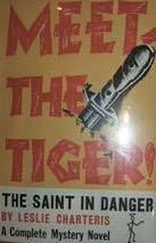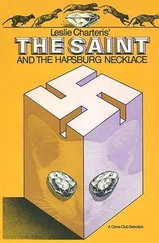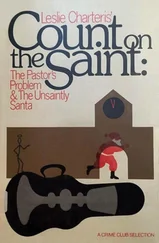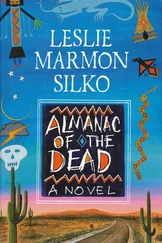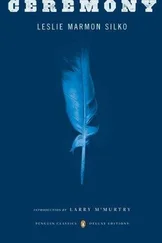Aunt Alice saved everything. All of her wedding gifts had been opened but then were carefully repacked in their boxes, labeled and put in order on the shelves that reached from floor to ceiling in her back room. As a child I loved to go back into the cool dim room that smelled of adobe clay and cedar wood. Aunt Alice didn’t have a flush toilet, but she had something far more fascinating: a commode. Behind a curtain hung from the ceiling up on a wooden platform was a big wooden chair with a skirt around the bottom of it to hide the slop jar that had to be carried to the outhouse and dumped followed by a scoop of old stove ashes.
After Aunt Alice died, Grandma Lillie went to help Uncle Mike go through her things and they found boxes neatly packed with catsup bottles that she’d washed, balls of string and pieces of used aluminum foil she saved.
Aunt Alice had no children. She was always very kind to us. She often babysat when my parents drove to Albuquerque in the evening to see a movie. Aunt Alice was at her best when she was telling us girls the old-time, hummah-hah stories. The stories about Kochininako, Yellow Woman, being abducted by strange men who turned out to be supernatural beings were Aunt Alice’s favorites.
My mother thought Aunt Alice was sexually repressed and the racy Yellow Woman stories that she told were her outlet. (My mother thought this because Aunt Alice only saw her husband twice a year: for eight weeks in the summer, and for a week at Christmas. Uncle Mike who was Mescalero Apache worked on the Santa Fe Railroad and lived in Richmond, California. This seemed to suit each of them just fine. They were entirely devoted to one another.)
Aunt Alice was my grandpa Hank’s first cousin; Alice’s mother, Margaret, from Paguate village, was married to Walter Gunn Marmon. My grandfather recalled when he was a young boy, he and the other children were afraid to walk past the yard if they saw Alice’s mother outdoors.
Margaret apparently suffered a nervous breakdown sometime before 1900. Aunt Alice would have been a young child at that time too. Grandpa Hank said Margaret used to scream at him and the other young children and threw rocks at them when they walked through the large yard and garden area the families of the two Marmon brothers shared.
My great grandmother, who seldom had anything negative to say about anyone, told my mother a strange story. John Gunn, not Walter Gunn Marmon, was Aunt Alice’s biological father. John Gunn and Walter G. Marmon were first cousins, and John Gunn came to Laguna with Robert G. Marmon, my great grandfather, in 1875.
Great Grandma said Margaret had a saddle horse she liked to ride very fast around the Laguna-Acoma area. While Walter G. Marmon was gone on months-long survey and map-making excursions, his wife saddled up her horse and galloped off for liaisons with John Gunn.
Grandma A’mooh said Alice’s mother became so sexually active with white men that some people got together and stopped her out in the hills where she was riding her horse. They confronted her about her behavior and then they partially scalped her.
For me this story never quite added up. My great grandma was a stern Presbyterian who never lied about anything. She was very fond of my mother so why would she tell her such a story if it was untrue? But Grandma A’mooh must have left something important out of the story. The violence of the confrontation points in the direction of something else.
Marital infidelity was not a crime among the Pueblos. Plenty of women had extramarital affairs just as the men did. Not a few women had affairs with white men, even with the Catholic priests. If this bloody confrontation took place as my great grandmother said, it would have occurred before 1900 and might account for Margaret’s odd behavior or breakdown which Grandpa Hank recalled.
Aunt Alice proudly displayed a large photograph of her father in his Union Army uniform, but she had no photographs of her mother. Even as a child I took note of this absence of photographs of Aunt Alice’s mother. I imagined her as one of those old-time people who disliked cameras and hid her face rather than be photographed.
Later my great grandfather Robert G. Marmon moved his family to the two-story adobe house (with the cellar that flooded) across the railroad tracks from his brother’s house. From time to time my great grandparents took in guests who got off the train to spend a few days sight-seeing in the Laguna-Acoma area. They kept a guest book that was signed by the likes of Edward Curtis, John D. Rockefeller and Franz Boaz.
By 1917, Margaret Marmon apparently had recovered because she worked as an informant about Laguna ceremonial practices with the Harvard-trained anthropologist Elsie Clews Parsons in 1917 and 1918. Parsons described her fieldwork thus:
“…I lived not in the pueblo, but about three miles away in the house of Mr. E. F. Eckerman near the railway station. In this detachment there were both advantages and disadvantages. Observation of the general life of the pueblo was necessarily limited and my circle of acquaintances was restricted. On the other hand, interrogation was unhandicapped [sic] by embarrassing visitors and the disposition of the informants was rendered comparatively frank and responsive. My chief informants were the mother and the aunt of Mrs. Eckerman….”
Parsons footnoted “the mother”:
“Mrs. Marmon, a native born Laguna woman, was the widow of W. G. Marmon, one of the early white settlers in the westward movement. Mrs. Marmon remained unsophisticated and uncontaminated by American shoddiness. She was a strong, gentle and very lovable person. She died in 1918.”
In her “Notes on Ceremonialism at Laguna,” published in Volume XIX of Anthropological Papers of the American Museum of Natural History in 1919, Parsons noted that all the Laguna people who worked as informants for her the two previous summers had died — two by influenza, and one by lightning strike, but that no one at Laguna linked the deaths to their work with her. Parsons fooled herself if she believed this; such links would have been made at once because it was well known that anyone who dared to reveal ceremonial secrets risked severe reprisals from the supernatural world.
Parsons also commented that my great grandfather and his wife were “indifferent” to the traditional rituals and were of no use in her ethnological research.
The stories about her mother, Margaret, explain a great deal about Aunt Alice; she might have been eccentric, but I spent many happy hours with her. I internalized her peacefulness during our blissful silent meanderings among the old bottles and broken tea kettles at the abandoned dump by the river. Even now I wander the trails of the Tucson Mountains looking for odd pebbles and colorful rocks for hours on end in the same blissful consciousness I learned from my days with her. She taught me her love of solitude and self-reliance which have served me well.
As a child I spent hours alone with my dogs down at the river playing with the minnows and toads. After I got my first horse I was able to roam farther into the sandy hills and up to the sandstone canyons along the piñon-covered ridges where I saw no one for hours, and then maybe only a pick-up truck with someone from Laguna on their way to sheep camp with supplies.
When I was five years old Aunt Alice came to babysit us early one morning while my parents went to hunt deer on Mount Taylor. I was crying because I wanted to go with my parents and they’d almost agreed to take me along, but then decided no.
To humor me that morning, Aunt Alice told my sisters and me the story about the Estrucuyu, the big headed monster, and Kochininako, Yellow Woman, who was a fine hunter even when she was a girl. Aunt Alice wanted me to know there had been a brave and clever girl who hunted rabbits to feed her sisters and mother but who also outwitted the Estrucuyu, and stalled the monster long enough for the Twin Brothers to arrive and slay him.
Читать дальше

